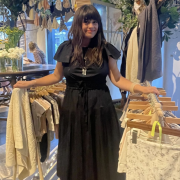How One Student’s Beer Reviews Helped Him Land His First Internship

The importance of having a portfolio and what should go in it
By Nick Schuller
“Everybody in today’s age needs a portfolio of some form.”
That’s according to David Regan, AD+PR professor of practice, who helps prepare AD+PR students for a competitive industry. He says creatives need an online portfolio to show off their work and help recruiters decide whether or not to hire them.
Senior and first-year advertising creative student, Zachary Komorowski has taken an unorthodox approach to building his online portfolio and it’s already helped him get a foot in the advertising industry.
“I originally made my website as a place to share my poetry. I didn’t have any professional writing samples at the time, but I knew [my website] could become a place for those in the future,” said Komorowski.
Since then, the 22-year-old aspiring copywriter and home brewer has added a few professional copywriting samples to his site, as well as his now-signature craft beer reviews.
Komorowski believes that work helped him land his first internship at Redhead Design Studio in Lansing, Michigan.
“I am just getting started as a copywriter student, so I didn’t have a lot of professional/ academic writing samples,” said Komorowski. “It’s the fact that I was doing things on my own; writing beer reviews, writing poetry, just doing anything extracurricular outside of class that was instrumental in landing the position.”
Regan says that professionals have differing opinions on what should be included in an online portfolio.
“Some professionals simply won’t care about any work that isn’t relevant to the job. However, at that same agency, you might be dealing with a professional who finds an interest—even a benefit—from showing a diverse range of talents.”
Regan said he’s seen both scenarios work. While there is no definitive answer regarding personal work being included, Regan did share a few must-do portfolio standards:
- Display 12-20 pieces of professional work.
- Only include your best work.
- If the agency you want to work for does a lot of one thing, your work should reflect that area.
- Your portfolio should flow like a good fireworks show: place your three best pieces in the beginning, middle and end.
Komorowski said as he accumulates more professional pieces, he will take Regan’s advice and create a new website strictly for his most relevant work. The beer reviews and poetry will always exist on the current website, said Komorowski.














